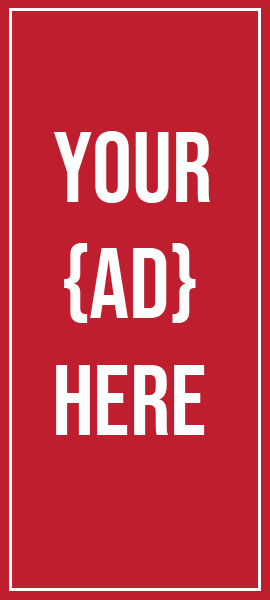
Finding & Organizing the Information
Research is to see what everybody else has seen, and to think what nobody else has thought.
– Albert Szent-Gyorgyi
Introduction
Now that we have an outline built, it’s time to find facts to support our headings and sub-headings. In this module, we will look at what sources you can use and how to organize your information.
Before writing can begin, you must gather facts to support the proposal.
Where do you look for facts?
- Observing and interviewing
- Company employees
- Company documents and reports
- Consultants if they are available to you
- Industry experts (with credentials for their expertise)
- Reports from accredited organizations
- Scientific studies
- Publications such as journals and magazines
- Books
Brief check
Always get the original documentation. For example, if an employee gives you statistics from last year’s financial statement gather a copy of the statement yourself and verify the statistics. Make sure to properly source the documentation in your report.
Using the Internet as a Resource
The Internet can be an excellent resource for gathering information if it is used properly. You need to make sure that the information you gather is reliable and credible.
Some tips:
- Only use information from accredited, reliable organizations (such as the government, major non-profit organizations, and accredited institutions).

- Always go directly to the source to get your information. For example, if you find a blog that references an interesting study, track down the study and use its information during your proposal.
- Use the Internet to find offline resources. For example, you may need to contact an organization by phone or e-mail to get the report that you need.
Brief check
Finally, remember that your outline is just a guideline. If you find additional information that you feel is pertinent, review the outline to see where it can be included, and revise as necessary.

Organizing Your Information
Information should, naturally, be organized by heading and sub-heading. Within those groupings, however, there are some other ways to organize information.
The most common choice for a proposal is from problem to solution. This means that a sub-heading section would start with a problem statement, spend several paragraphs outlining the options (making your organization’s offering seem the most attractive), and offer a conclusion at the end.
Some other methods include:
- Chronological order (most recent to oldest, or vice versa)
- By level of detail (simplest to most complex, or vice versa)
- By importance
- Separated by pros and cons, with a conclusion at the end
- By offering a question and then an answer
Although you may feel compelled to demonstrate your language talents when attempting to impress a client, when creating a business proposal, your best choice is to be straightforward, succinct, and direct. You won’t want to use flowery words or anything else that could be misunderstood.
You’ll want to make sure your proposal is simple and easy to read, with no chance for misunderstanding about what you promise to perform or provide.
As a result, you should avoid overly technical industry jargon to ensure that your client understands exactly what you’re saying and what it means within the context of your (and their) organisation.
If you’re creating a proposal for a speciality food company, it shouldn’t appear or sound the same as if you’re preparing a proposal for an asset management firm. You should constantly keep your target audience in mind as you design and improve your proposal.
Finally, your best bet is to be direct, concise, and to the point, but don’t be hesitant to adjust your writing to your audience so that your client thinks that the proposal was actually made with their business in mind.
Having said that, your proposal should demonstrate that you not only understand your potential client, but also respect them professionally.
Where to look for inspiration when creating a business proposal
If you are seeking for some inspiration to write your own business proposal, the following processes may provide some ideas for you:
- Inquire with your other co-workers
Think about reaching out to others in your field who you’ve made connections with through other means, such as networking events or in other ways, and asking them for some suggestions.

You may even investigate the possibility of soliciting suggestions from companies that are in direct competition with your own. Especially if an existing company has found success and has its own devoted client base, they may be more likely to assist start-up companies in the same industry in getting their own customers. This is especially true if the start-up firm is in the same industry as the established company.
- Carry out some research
It is crucial to do out research on the industry you are in so that you may understand more about the actual business you are in. It’s possible that the more you learn and educate yourself through research and reading, the more ideas for your proposal will come to you naturally. Because of your study, you should now have a better understanding of the requirements of your potential customers and business partners, as well as the solutions you can offer. You might find out what other people in your field are doing that you do differently or better, and then be able to think of ways to explain your value proposition to the people who are listening to you.
- Participate in sales presentations
Attending public pitch meetings is something you should think about doing if there are any in your area where business owners are presenting their ideas to groups of investors or seeking crowd-funding from potential clients. Even if the company that is pitching is not in the same industry as your own, you may still gain valuable insight from the information that they present with the audience. You might find some ideas for your own presentation in the phrases that they use, the details that they include in their presentation, or the questions that they answer from the audience.
- Carry out a search on the Internet.
Simply conducting a search on the Internet can frequently result in the discovery of lists of ideas or company proposals. There are websites that allow individuals to upload their own proposal, which serves as a place where they can direct their potential clients or showcase their own work for others to find and use as inspiration. These websites also allow individuals to direct their potential clients to their own websites. You can also find articles that contain ideas for business proposals that you can modify so that they fit your own company and the products or services that you provide.
- Go outside the confines of your current business
You might be quite knowledgeable with your industry, especially if you have already had some success in your profession, but you should still look at business proposals and presentations from organizations operating in a variety of industries. Consider how you might include some of the things they include into your own proposal.
- Alter the way you look at things.
If you want to generate ideas for creating a business proposal, one strategy you can use is to shift your focus from what you can do for a company or organization to what the requirements are of the people who might be interested in hiring you. After you’ve determined what those needs are and demonstrated that you have a thorough comprehension of them, you’ll be able to start formulating ideas for a business proposal that will address their concerns, motivate them to take action, and demonstrate that you’ve made the effort to connect with their requirements in a manner that your rivals may not have done.
Practical Application
Donna finished the first draft of her proposal the night before, and in the morning, she took a copy to her co-worker, Anthony. She was hoping that he might hone in on some areas that needed revising.
Anthony read over the proposal. When it came time to talk about the bibliography, he noted, “I see that many of your facts and statistics come from online resources, which is great. The internet is a fantastic resources for information gathering. However, here you cite an online blog as a resource.”
Donna said, “Did I not cite it correctly?”
Anthony said, “No, you did. But I’d suggest finding the study that the blog is using. That way your information is coming from the most credible source.”
Donna said, “Good idea. Thanks, Anthony.” With a little digging, she found the study and included it in her proposal.





